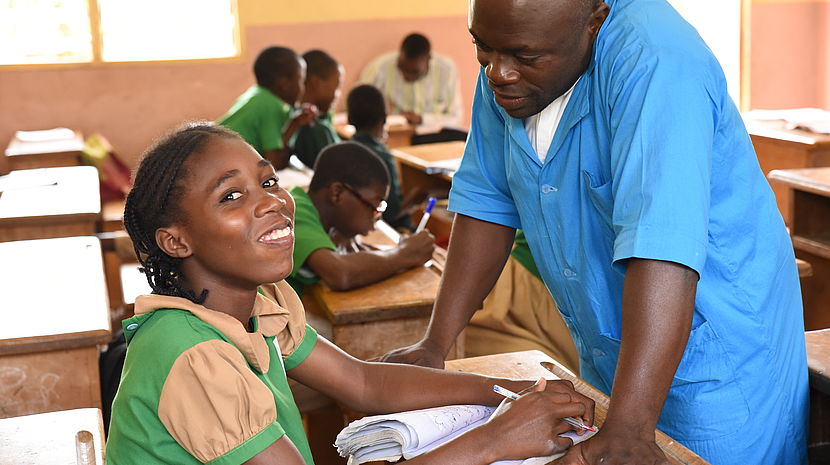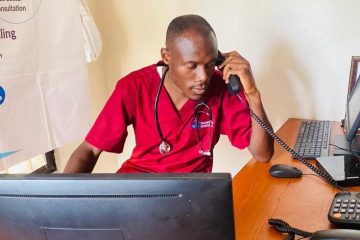When a child starts to manifest convulsions, inability to stand upright, tremors and limited or total inability to walk as they hit their early take-off stage during growth, it is and should be a big cause of worry among parents.
In some cases, these may be signs and symptoms of Cerebral Palsy or any other condition but according to Julius Habumugisha a Medical Professional and Teamwork Homecare Services CEO, a provider of home-based medical care, doing confirmatory tests to confirm or rule out Cerebral Palsy is the first step to effectively managing this condition.
What is Cerebral Palsy?
A group of medical conditions that arise from damage that occurs to the developing brain during the development of a baby in the mother’s womb.
Signs and Symptoms of Cerebral Palsy
The symptoms of this condition start to show up during infancy and the preschool period. They include stiff muscles which are referred to as spasticity, irregular posture, movement of body parts that are uncontrollable for example the head and neck, and exaggerated reflexes.
They also in many cases have floppy arms and legs plus the trunk making it difficult to stand, walk or support themselves as a result.
https://googleads.g.doubleclick.net/pagead/ads?gdpr=0&us_privacy=1—&gpp_sid=-1&client=ca-pub-8976427804728908&output=html&h=280&adk=740511334&adf=408478379&pi=t
Difficulty in swallowing is also experienced by some of the victims of Cerebral, eye muscle imbalance which makes it difficult for both eyes to focus on a single object is another symptom.
There is hindered capability to move and flexibility in the joints of many Cerebral Palsy victims.
Severe Cases
In severe cases, those suffering from Cerebral Palsy manifest signs and symptoms of Epilepsy, intellectual disabilities, blindness and deafness among other conditions.
Note that this condition doesn’t worsen as a child develops but may manifest with varying symptoms during a child’s growth.
The condition’s severity also varies from person to person in some cases affecting specific parts of the body like the limbs. Cerebral Palsy may also affect one side of the body in some cases however it may show up in multifaceted parts and organs of the body in other cases.
Development trouble
While a child with Cerebral Palsy is growing up they may experience delays in speech development, trouble sucking or chewing, drooling and trouble swallowing. Learning disabilities, and delayed growth result in the affected child turning out to be much smaller in size in comparison with the average size of their peers.
When do you seek medical intervention?
If your child has irregular body movements, is experiencing delays in development, shows signs of irregular posture, poor eye coordination and swallowing difficulties see a Doctor immediately according to Teamwork Homecare’s CEO and Clinician Julius Habumugisha.
What is the prevalence of Cerebral Palsy in Uganda?
Research estimates show the prevalence of Cerebral Palsy in Uganda stands at between 2.7 to 2.9 per 1000 children.
In terms of age, research findings show the disease is most prevalent among children less than 8 years old. The severity levels within this age group are also higher with about 14 out of every 50 cases of Cerebral Palsy manifesting as severe while in the 8-17 year age group these reduce to about 5 out of every 50 cases.
Two subtypes of this disease are the most prevalent in Uganda with Spastic Unilateral Cerebral Palsy detected in 46% of the cases diagnosed and Bilateral Cerebral Palsy standing at 40%.
What causes Cerebral Palsy?
While the exact cause according to medical experts is not exactly pinpointed, damage to the brain during a child’s development in the womb and immediately after birth or during infancy may lead to this condition.
Those incidences Teamwork Homecare’s Neuro Surgeon and Specialist Dr Blessing Taremwa can result in damage leading to gene changes that may alter brain development negatively, maternal infections which may affect the baby too and Stroke which may affect the blood supply to the developing brain of a child.
The damage may also result from bleeding into the brain of the child during birth or before during development, infections suffered by the child during their early stages which cause swelling around the brain may also be a cause of this disease.
However, according to Dr. Taremwa maternal infections do play a big part in many cases of Cerebral Palsy among babies and the following diseases if they do affect the mother during pregnancy increase the chances of a child acquiring the disease during its early stages.
“Syphilis, Rubella, Cytomegalovirus, Herpes which can be passed on from mother to child during pregnancy, Toxoplasmosis, Zika Virus, Intra uterine infections, thyroid conditions, preeclampsia and seizures affecting the mother all increase the chances of a child acquiring Cerebral Palsy,” he says.
For the baby in their early stages in case they are affected by any of the diseases below, the risk of acquiring Cerebral Palsy increases.
These are Bacterial meningitis, Viral encephalitis and Jaundice in its severe form or if it is left untreated.
Other post-neonatal events especially diseases like cerebral Malaria and seizures also account for about 25 % of all cases making the two a very high risk factor according to Dr. Taremwa.
What other factors may lead to a child acquiring Cerebral Palsy?
According to Dr. Richard Lukandwa a Consultant Physician with Teamwork Homecare Services, during the pregnancy of the mother and around the time of childbirth if the following situations occur, the risk of a child acquiring Cerebral Palsy does increase significantly.
“Premature birth of a child, a mother carrying multiple pregnancies at the same time also increase the chances of babies acquiring the disease.”
The low birth weight which is usually confirmed when a child is born weighing under 2.5 kilograms according to Dr. Lukandwa may also increase the risk, obstructed labour and other child delivery complications can also be a factor in this condition.
Future Complications resulting from Cerebral Palsy
Several future Complications can result from a child having cerebral Palsy. Neuro Surgeon Dr. Taremwa says
“These may include Contracture a form of muscle tissue shortening which results from excessive tightening of muscles and can also affect bone and joint development. Extreme cases may manifest as dislocation of bones and a curved spine as well.”
Malnutrition due to problems of swallowing resulting from Cerebral Palsy. Feeding too becomes harder leading to low nutrient intake and resulting in weak bones, impaired growth and creating the need to feed through tubes in extreme cases.
Mental health and behavioural disorders resulting from depression which comes from social isolation and the challenges of coping with disability can complicate the situation further.
Lung and Heart disease for example result from swallowing challenges, food, saliva, drinks, and vomit may be inhaled into the lungs resulting in respiratory issues.
Dr. Taremwa notes that osteoarthritis may also affect the patient which manifests as muscle spasticity, misalignment and pressure on joints leading to painful bone disease. One may also experience fractures due to low bone density resulting from lack of mobility, poor nutrition and side effects of medication resulting from treatment of seizures.
In addition, he says intestinal issues, oral health, disturbed sleep conditions, chronic pain and skin breakdown are the other challenges which result from Cerebral Palsy.
What treatment is given for Cerebral Palsy?
Treatment regimens may vary greatly based on the individual needs, symptoms and complications related to each case of Cerebral Palsy but Medical Professional Julius Habumugisha says physical therapy is aimed at improving the patient’s strength, flexibility, mobility and balance.
Medication aimed at managing spasticity, seizures and related conditions is also given. According to Habumugisha, this includes muscle relaxants, anticonvulsants and botulinum injections to mention but a few.
Surgery may also be performed on the patient to correct deformities, releasing contractures and alleviating symptoms. The various surgeries done will include orthopaedic surgery, neurosurgery and reconstructive surgery.
Orthotics and assistive devices need to be introduced to the patient as well to help with their mobility, stability and daily activities using braces, splints, walkers, wheelchairs and other adaptive devices.
Acupuncture and massage therapy are also recommended as acupuncture helps manage pain and spasticity while massage therapy improves relaxation, reduces spasticity and enhances well-being.
Occupational therapy to enhance independence and daily living skills, speech therapy to improve communication and swallowing abilities, recreational therapy to improve socialisation and hippo therapy to improve balance, mobility and emotional well-being.
According to Habumugisha aquatic therapy, music therapy, conductive education plus counselling and mental health support can also be offered to Cerebral Palsy patients in addition to the above to ensure a much-improved quality of life.
How can you prevent Cerebral Palsy?
While there is no fully certain method of preventing this condition, a pregnant woman can take the following precautions to reduce the risk of her unborn child acquiring this condition Dr. Lukandwa advises.
Ensuring you are fully vaccinated from diseases like Rubella and other conditions before getting pregnant.
“You must also ensure you have regular prenatal care throughout your pregnancy to detect and avert any would-be complications in consultation with your Doctor,” he says.
Staying away from alcohol, tobacco and illegal drugs during pregnancy while also ensuring you have proper nutrition and good health generally also reduces the risk of your unborn baby acquiring this condition.
Dr Lukandwa notes that in some rare cases, Cerebral Palsy may result from severe head injuries that cause brain damage during later stages of child development.
Preventing these from occurring may take steps like having safety rails on a child’s bed, providing them with a child car seat, bicycle helmet and adequate supervision as they move and play around.
Do you have a story in your community or an opinion to share with us: Email us at
WhatsApp: 0200 909453 OR 039 3256331
Email: info@teamworkhomecare.com
Lets catchup in the next one



